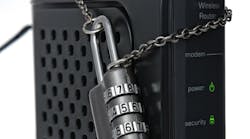To relieve congestion and increase both innovation and use of the unlicensed spectrums, the Federal Communications Commission (FCC) has modified the rules for Unlicensed National Information Infrastructure (U-NII) devices operating in the 5-GHz band. The new rules will make 100 MHz of that spectrum accessible for U-NII devices, which play a key role in meeting public demand for wireless broadband service. Given the expanded spectrum, they have the potential to offer speeds to 1 Gb/s or beyond.
U-NII devices currently operate in 555 MHz of spectrum within the 5-GHz band for WiFi and other high-speed wireless connections. The FCC’s changes will remove the current restriction on indoor-only use while increasing permissible power. As a result, the devices can be better integrated with the unlicensed portions of the spectrum. The resulting faster speeds will specifically benefit congested spaces including WiFi hot spots at airports and convention centers. These changes also support wireless home local-area networks, connecting smartphones, tablets, and other devices in rural areas.
In opening access to more of the spectrum, the IEEE 802.11ac standard will be leveraged to increase data speeds and support the deployment of outdoor WiFi hot spots without interference. According to a statement from Commissioner Mignon Clyburn, the FCC plans on freeing up an additional 195 MHz in the U-NII-2 (5.25 to 5.35 GHz) and U-NII -4 (5.85 to 5.925 GHz) bands. Commissioner Jessica Rosenworcel seconded that thought, suggesting the possibility of using unlicensed spectrum in the 3.5-GHz band and finding ways to provide services in the 600-MHz band currently used by broadcasters.
